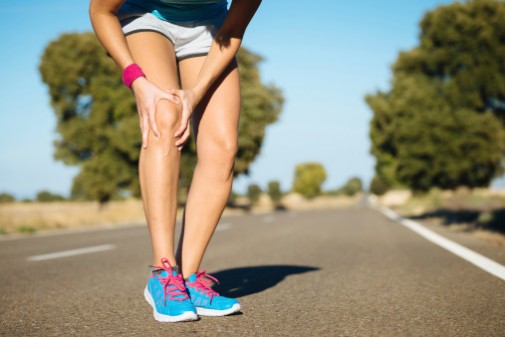
How to prevent overuse injuries

The benefits of an active lifestyle are well documented to dramatically improve one’s physical and emotional health.
The advantages of regular physical activity reaches far beyond weight control, as it can reduce the risk of heart disease, high blood pressure, osteoporosis, diabetes, some cancers, and high cholesterol.
A well-planned exercise program improves flexibility, enhances overall athletic performance, boosts your immune system and builds strong muscles; bones and joints. Our bodies have an amazing ability to adapt to physical stress such as exercise and activity, which make bones, muscles, tendons and ligaments stronger and more functional. This occurs by internal remodeling – breakdown and buildup of tissue.
If breakdown occurs more rapidly than buildup, then an overuse injury occurs.
Causes of overuse injuries
Training errors are the most common cause of overuse injuries as active individuals increase the intensity, duration or frequency of their activity or sport. The second most common cause is improper, unsupervised technique.
Other causes include returning to activity too quickly after an injury, or a slight change in one’s form. Therapists, athletic trainers, personal trainers and coaches can play a role in preventing recurrent overuse injuries.
There are many risk factors for overuse injuries, including core (back and abdominal muscle) weakness, which causes an imbalance between strength and flexibility, improper body alignment such as knock-knees, bowlegs, unequal leg lengths, and flat or high-arched feet.
An old or incompletely rehabilitated injury can also contribute as a risk factor for overuse injuries.
High school student athletes report “growing pains.” This is usually due to a growth spurt in adolescents where bones grow faster and the muscles or tendons can’t keep up. These pains eventually regress with time.
Finally, improper equipment such as the type of shoe, or old or worn out shoes can contribute to pain and injury.
Diagnosis
Pain is not normal with activity.
Any person who has pain or discomfort with exercise or activity should be seen and evaluated by an experienced sports medicine specialist trained in treating these kinds of injuries.
The diagnosis can be made after a comprehensive history and physical exam. There are times when a further work-up is necessary, such as X-rays, MRIs or bone scans.
Treatment
Icing after a workout and compression of a sore area with an ace wrap or brace, as well as anti-inflammatory medications, are all initial treatments of pain, soreness and inflammation after a workout.
Learning the correct workout technique also makes a difference, whether from a coach, athletic trainer, physical therapist or personal trainer.
Decreasing the intensity, duration or frequency of workouts; changing up between a hard versus easy workout schedule; and cross-training with other activities to maintain fitness levels can help treat overuse injuries.
Prevention
Many overuse injuries are completely avoidable.
Learning the proper training technique, as well as resting adequately between workouts is important. Taking a day off between workouts is recommended.
Incorporating strength training, increasing flexibility, and improving core stability will also help minimize overuse injuries.
In athletes looking to make viable improvements in their training, many sports medicine physicians advocate “the 10-percent rule.” This basically means, do not increase your training more than 10-percent per week. This allows your muscles, ligaments and bones the appropriate amount of time for recovery and remodeling.
For a strength-training program, do not increase the amount of weight more than 10-percent per week.
In the case of cardiovascular health, runners, walkers or swimmers should only increase their miles or pace 10-percent each week. Also, remember the importance of at least a 15-minute warmup and cool down before and after activity.
Finally, get the advice of a sports medicine specialist, physical therapist or personal trainer to prevent overuse injuries from occurring.
Related Posts
Comments
One Comment
About the Author
Dr. Joshua Alpert is an orthopedic surgeon on staff at Elgin-based Advocate Sherman Hospital who is trained in sports medicine and arthroscopy. He is a physician with Midwest Bone & Joint Institute, which has served the Chicago area for over 30 years.









Thank you for sharing with us, I think this website genuinely stands out :D.